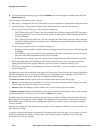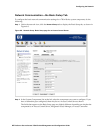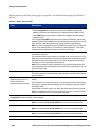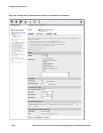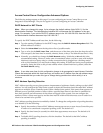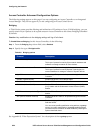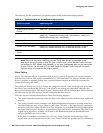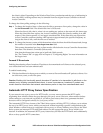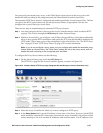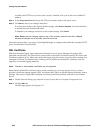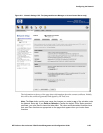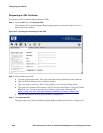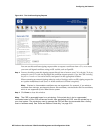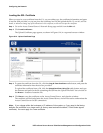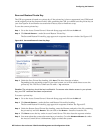Configuring the Network
the client’s rights. Depending on the Wireless Data Privacy mechanism and the type of addressing in
force, the client’s existing sessions may be tunneled from the original Access Controller to the new
Access Controller.
To change the client polling settings, do the following:
Step 1. To change the length of time a client must be idle to generate a client probe, change the value in
the
Poll clients after field. The default idle time is 30 seconds.
When the client is idle, that is, when it is not sending any packets to the network, this timer runs.
When the client idle timer expires, the Access Controller probes the client by sending it an ARP
request. If the client responds, it is no longer considered idle. If the client does not respond the
Access Controller continues sending ARP requests at approximately the specified frequency as
long as the client is idle, until the time-out is reached.
Step 2. To change the timeout counter, which determines when the client should be disassociated, change
the number of seconds in the
Start linger timer after field.
This counter determines how long a client must be idle before the Access Controller disassociates
that client. The default is 5 minutes (300 seconds).
Note that the disassociate action can in itself take 30-40 seconds.
See “The Timeout Tab” on page 4-59 in Chapter 4, “Configuring Rights” for more information on
the linger timer.
Forward IP Broadcasts
Enabling broadcasting allows broadcast IP packets to be transmitted to all clients on the selected ports,
even clients that have not been authenticated.
To enable broadcasting:
» Click the checkboxes for those ports on which you want to Forward broadcast IP packets to clients. You
can click none, some, or all of the ports.
Caution: Enabling this functionality permits broadcast IP packets to be transmitted to all clients on the
selected ports, including unauthenticated clients. In some circumstances, broadcast IP packets may
contain sensitive information that network administrators prefer to keep from unauthenticated users.
Automatic HTTP Proxy Server Specification
If your network uses a proxy server for HTTP traffic, you may want to ensure that HTTP traffic
originating from wireless clients also goes through your proxy server. However, when mobile wireless
clients connect to your network, especially if you allow guest access, there is no guarantee that their
browsers will be configured correctly for your proxy server.
The Automatic HTTP Proxy feature of the 700wl Series system, utilizing HTTP 1.0, allows you to enforce
the use of an HTTP proxy server within your network without requiring a specific configuration on the
client. Whether a client browser is configured with no proxy, or for any arbitrary proxy server, the 700wl
Series system can intercept HTTP traffic and redirect it to the appropriate proxy server within your
network. In addition, the automatic HTTP proxy feature lets you filter the HTTP traffic and conditionally
allow or deny specific HTTP connections.
6-26 HP ProCurve Secure Access 700wl Series Management and Configuration Guide



